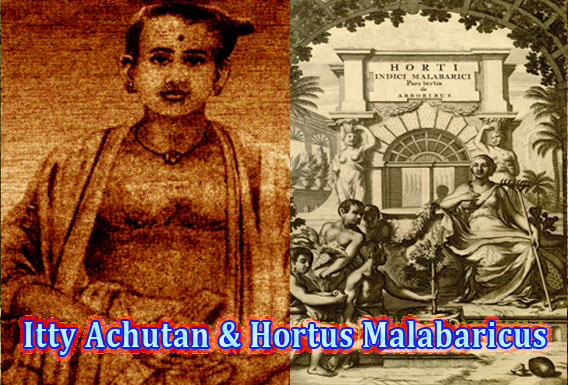
Kerala PSC HSST Botany 2012 Examination
Higher Secondary School Teacher: Junior & Senior
Question Paper Code 40/2012 (Cat. NO. 449/2010)
Original question paper of Kerala PSC HSST Botany Junior / Senior (Higher Secondary School Teacher Botany), Category No. 449/2010) examination conducted by Kerala PSC (Public Service Commission) on 13/04/2002 (Q. Code 40/2012) for the appointment of HSST Botany in Government Higher Secondary Schools of Kerala under the Directorate of Higher Secondary Education, Trivandrum, Govt. of Kerala. Questions are in MCQ (Multiple Choice Questions) format.
Part – 2 (Questions 26 – 50)
26. Auxospores are produced by:
a. Volvox
b. Spirogyra
c. Diatoms
d. Oedogonium
Ans. (c). Diatoms
Auxospore is a type of asexual spore in diatoms. Auxopore formation helps the diatomic cells to regain its original cell size which is reduced by repeated mitotic cell divisions.
27. Lectins are:
a. Lipids
b. Protein binding carbohydrate
c. Fatty acids
d. Carbohydrates binding proteins
Ans. (d). Carbohydrates binding proteins
Lectins: they are plant proteins which specifically bind to carbohydrates. They are toxins since they can coagulate glycoproteins. Lectins have immense application in biological research; they can be used for the separation and purification of specific glycoproteins. In the earlier days, lectins were also used for blood typing. Concanavalin A (ConA) is the first isolated and commercialized plant lectin (isolated from jack bean Canavalia ensiformis). Ricin is another common plant lectin isolated from Ricinus communis (castror).
28. Name an enzyme which is active at 90oC
a. Taq polymerase
b. DNA polymerase
c. RNA polymerase
d. Helicase
Ans. (a). Taq polymerase:
For details, refer description for question 1 of set 1 (https://www.easybiologyclass.com/hsst-botany-junior-senior-kerala-psc-question-paper-with-answer-key-explanations-part-1/)
29. Amphibians of plant kingdom:
a. Algae
b. Lichens
c. Bryophytes
d. Gymnosperms
Ans. (c). Bryophytes:
Bryophytes are the most primitive land plants. Even though they are adapted to land conditions, they require water to complete their life cycle. Just like the amphibians, they require the assistance of water for the completions of sexual reproduction. Bryophytes require water for: (1). Dehiscence of antheridia, (2). Liberation of antherozoids, (3). Transfer of antherozoids form antheridia to archegonia and (4). Opening of archegonial neck
30. Olericulture deals with:
a. Flowers
b. Vegetables
c. Mushroom
d. Fruits
Ans. (b). Vegetables
Silviculture: cultivation of forest plants
Apiculture: cultivation of bees
Citriculture: cultivation of citrus plants
Arboriculture: cultivation of trees
Floriculture: farming flowering plants
Monoculture: cultivation of single type of crop
Pisciculture: fish farming
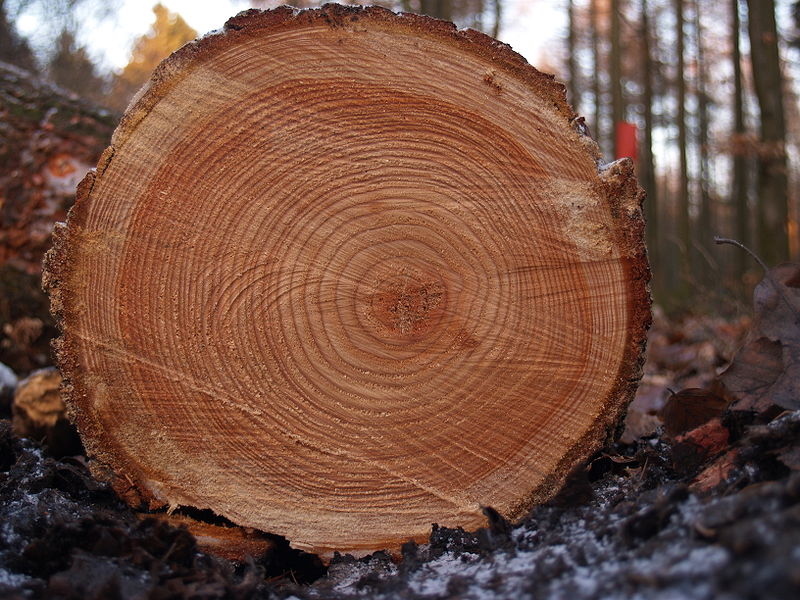
Annual (Growth) Rings (source wikipedia)
31. Annual rings are related with:
a. Dendrocronology
b. Palynology
c. Palentology
d. Cryology
Ans. (a). Dendrocronology:
Dendrocronology: the technique of determining of age of trees by counting growth rings or annual rings.
Growth rings: Growth rings are formed in the plants due to the SEASONAL ACTIVITY of CAMBIUM. During spring, the cambial activity is more and produces more secondary elements with wide lumen. During winter, the cambial activity is less and produces fewer amounts of secondary elements. This difference in season alternate in every year, and this alternation can be visualized as alternating pattern of ring in the cross section of wood. By counting the number of these rings we can calculate the approximate age of the tree.
32. Haematoxylene is a:
a. Basic stain
b. Nuclear stain
c. Acid stain
d. Mordant
Question is removed due to the confusion in options
Haematoxylin is a natural stain, obtained from Haematoxylum campechianum (Fabaceae). The name is because, in the earlier days, haematoxyin was used for staining blood samples. It is a nuclear stain, it stains the nucleus blue. Haematoxylin as such do not have the staining property. The colour will develop only in the presence of mordants. Alums are commonly used mordants with haematoxylin.
33. In nullisomic condition chromosome number is:
a. 2n-2
b. 2n+2
c. 2n-1
d. 2n+1
Ans. (a). 2n-2
Monosomy, nullisomy, trisomy, tetrasomy etc. are the aneuploidy conditions of chromosomes. Aneuploidy is numerical aberrations in the chromosome were the individual chromosome form a diploid set shows variation (not the complete set).
Monosomy: one chromosome from a homologous pair is missing, represented as 2n-1
Nullysomy: both the chromosomes of a homologous pair is missing, represented as 2n-2
Trisomy: one chromosome additional, represented as 2n+1
Tetrasomy: one homologous pair of chromosome additional, represented as 2n+2
Down syndrome, Klinefelter syndrome and Turner syndromes are caused by the numerical aneuploidy aberrations of chromosomes
Down syndrome is caused by trisomy at 21st chromosome
Klinefelter syndrome is caused by trisomy of sex chromosome, represented as 2n+1 (XXY)
Turners syndrome is caused by monosomy of sex chromosome, represented as 2n-1 (XO)
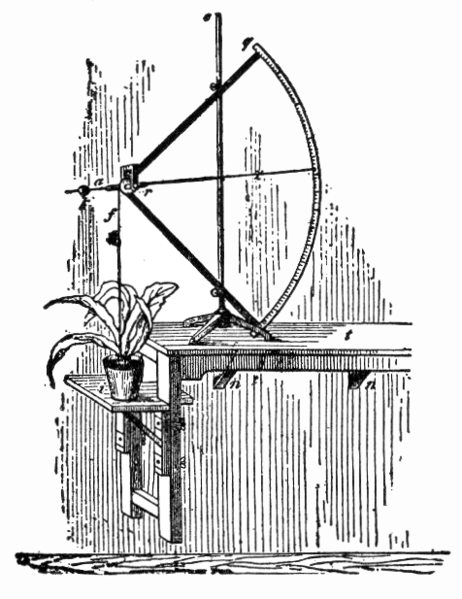
Arc Auxonometer (source wikipedia)
34. Which among the following acts as termination codon?
a. AUG
b. UAG
c. GUG
d. ATG
Ans. (b). UAG
UAG (amber) UAA (ochre), and UGA (opal) are the universal stop codons. These stop codons are sequence on the mRNA. In the DNA they are as TAG, TAA, TGA
AUG is the start codon, both in prokaryotes and eukaryotes, which codes for methionine, the first amino acid in protein synthesis
35. Energy star is used in:
a. Trusted site
b. E-waste
c. Green computing
d. CD
Ans. (c). Green computing
Green computing: environmentally sustainable computing or IT. It deals with production, use and management of computers with minimum environmental problems.
Energy star is a labeling programme launched by U.S. Environmental Protection Agency in 1992 for the labeling of low energy consuming electrical instruments such as computer monitors.
36. Auxanometer is used to measure:
a. Plant growth
b. Intensity of sound
c. Water potential
d. Osmosis
Ans. (a). Plant growth
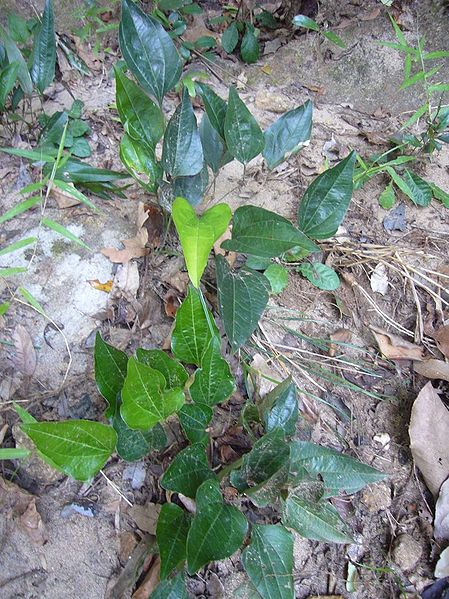
Trichopus zeylanicus (source wikipedia)
37. Jeevani is
a. Name of an ethnomedicine
b. Carminative
c. A wee
d. Oil seed crop
Ans. (a). Name of an ethnomedicine
Jevani is a patented product produced from the traditional tribal medicinal plant Trichopus zeylanicus (Dioscoreaceae). It has been used as an energetic agent for centuries by the Kaani tribal community of the Agastya Koodam ranges in Kerala, India
38. Rules of botanical nomenclature are compiled in:
a. ICZN
b. ICNB
c. ICBN
d. ZCBN
Ans. (c). ICBN
ICBN: International Code of Botanical Nomenclature, As on 2011, after the International Botanical Congress, Melbourne (Melbourne code) it is now renamed as ICN. ICN stands for International Code of Nomenclature of Algae, Fungi and Plants.
ICZN: International Code of Zoological Nomenclature
ICNB: International Code of Nomenclature of Bacteria
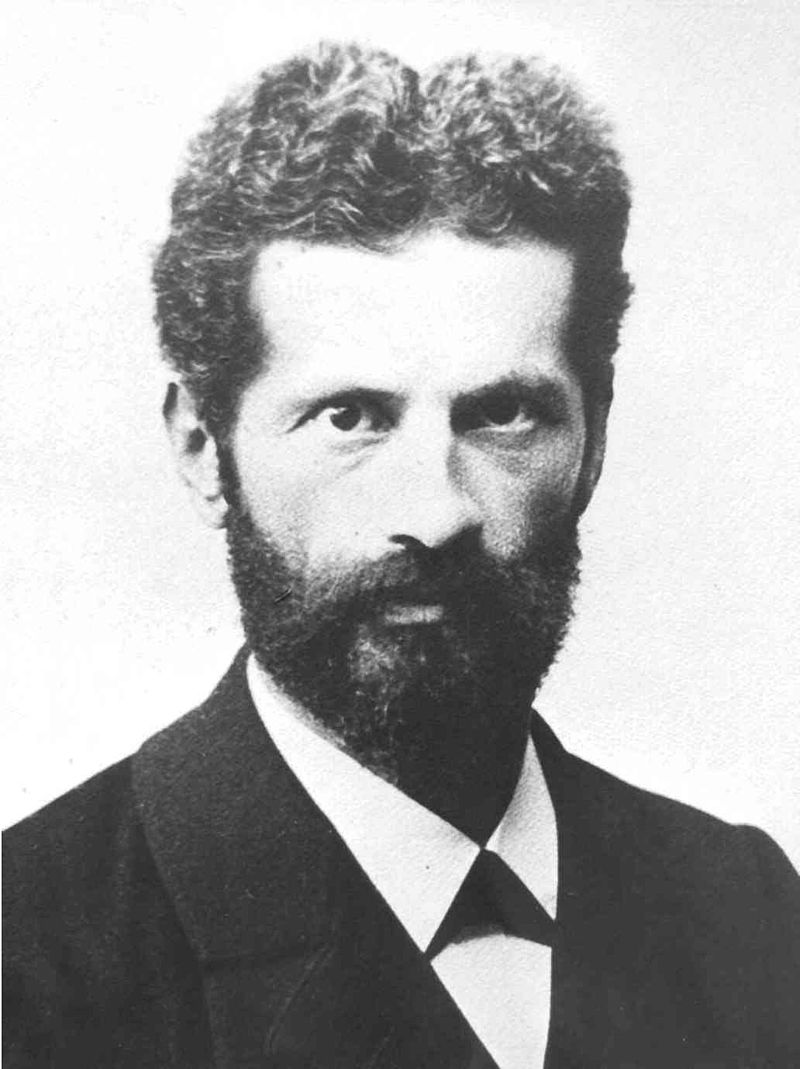
Haberlandt: Father of Tissue Culture (source wikipedia)
39. Father of plant tissue culture:
a. Haberlandt
b. Maheswari
c. Linnaeus
d. Hanning
Ans. (a). Haberlandt
40. Stele with leaf gap and branch gap:
a. Cladosiphonic
b. Phyllosiphonic
c. Amphiphloic
d. Protostele
Ans. (b). Phyllosiphonic
Cladosiphonic: a type of siphonostele with no leaf gap Eg. Selaginella
Phyllosiphonic: a type of siphonostele with simple or larger leaf gaps
Amphiphloic: a type of siphonostele with phloem present on both sides of xylem
Protostele: primitive type of stele with central core of xylem surrounded by phloem
41. The chemical constituent of the seed coat in synthetic seed:
a. Calcium chloride
b. Calcium alginate
c. Sodium nitrate
d. Sodium alginate
Ans. (b). Calcium alginate
For the preparation of synthetic seed coats the artificial embryos are coated with a solution of Sodium alginate with calcium chloride. During this process the sodium atoms in the sodium alginate is replaced by calcium residues. Since the valency of calcium is more than that of sodium, cross linking will occurs and results in the formation of bead like structures. This bead like structures are formed by the even covering of calcium alginate over the artificial embryos.
42. Major source of sugar in India
a. Beetroot
b. Sugarcane
c. Dates
d. Sugar beet
Ans. (b). Sugarcane
Major source of sugar in tropical regions: Sugar cane
Major source of sugar in temperate regions: Sugar beet
43. Glyoxylate pathway is concerned with:
a. Synthesis of sucrose
b. Net synthesis of glucose from fatty acids
c. Synthesis of ATP
d. Synthesis of NADPH
Question removed due the confusions of options provided.
Glyoxylate pathway is an anabolic pathway occurs in plants for the conversion of acetyl CoA to succinate for the synthesis of carbohydrates. In plants glyoxylate pathway occurs in peroxisomes and hence plant peroxisomes are also called as glyoxysomes. During seed germination, the stored food in seed in the form of fat is utilized by the glyoxylate pathway.
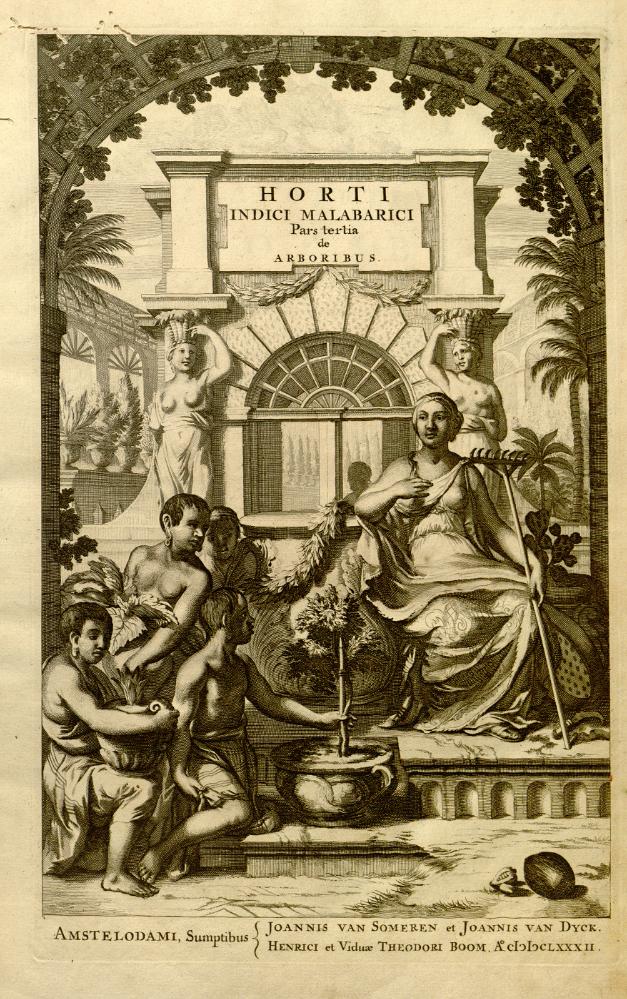
Title Page of Hortus Malabaricus (source wikipedia)
44. Contribution of Van Rheed:
a. Flora of Presidency of Madras
b. Genera Plantarum
c. Hortus Indicus Malabaricus
d. Species plantarum
Ans. (c). Hortus Indicus Malabaricus
Hortus Malabaricus is the comprehensive compilation of the medicinal plans of Kerala mainly from Malabar region (British Malabar) by Dutch Malabar Governor Hendrik van Rheede. The original publication is in Latin took more than 30 years, includes with 12 volumes; published in Amsterdam during 1678-1693. The Malayalam letters were first published in this book. About 742 plants were described in this compilation with detailed description, medicinal properties and copper plate engraved live size images. Apart from Latin, the plant names have been recorded in other languages including Konkani, Arabic, English, and Malayalam.
Van Rheede were assisted by Itti Achuden Vaidyan (ayurvedic physician), Ranga Bhat, Vinayaka Pandit, Appu Bhat (physicians of Cochin)
The book has been translated into English and later to Malayalam by Prof. K. S. Manilal.
Linnaeus took many names from Hortus Malabaricus for his Species Plantarum compilation.
Flora of Presidency of Madras was compiled by J.S. Gamble
Genera plantarum was published by Bentham and Hooker
Species plantarum was published by Linnaeus
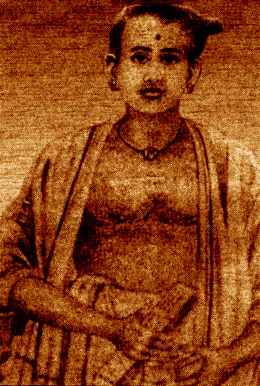
Itty Achudan Vaidyan (source wikipedia)
45. The primary acceptor of CO2 in C3 pathway is:
a. PEP
b. RuBP
c. GDP
d. NADP
Ans. (b). RuBP
RuBP (ribulose bisphosphate) combine with CO2 to form two molecules of into 3-phosphoglycerate (3 carbon compound), the first stable product of Calvin cycle
46. Vivipary is shown by:
a. Parasite
b. Mesophyte
c. Hydrophyte
d. Halophyte
Ans. (d). Halophyte
Halophytes are plants adapted to grow in saline water conditions. They have special morphological, anatomical and physiological adaptations to overcome the extreme saline environment. High salt condition is lethal for seeds and it also inhibits seed germination. Moreover the soil in halophytic condition are poorly aerated which is also lethal to seed germination. In order to overcome these germination barriers, the halophyte shows the adaptation of vivipary. Here the seed germinate while they are still attached to the mother plant.
47. Colchicine is extracted from:
a. Bixa orellana
b. Colchicum autumnale
c. Gloriosa superba
d. Nicotiana tabaccum
Ans. (b). Colchicum autumnale (Liliaceae)
Colchicine is a plant toxin extensively used for the treatment of gout. Caolchicine is also used as an agent to induce chromosome doubling for the production of homozygous diploids by anther culture. It induces endo-re-duplication (karyokinesis without cytokinesis). Colchicine induce endo-reduplication by inhibiting the formation of microtubules by inhibiting tubulin polymerization (hence they are also called as ‘mitotic poison” or spindle poisons)
48. Major hot spot in Kerala:
a. Silent Valley
b. Eravikulum
c. Nilgiri
d. Muthumalai
Question removed due to confusion in the answer options
There is not hot spot in Kerala
Mega-biodiversity Hotspot is the correct term
Mega-biodiversity Hotspot: a large bio-geographic area with exceptionally rich biodiversity with many endangered and endemic species. For a region to ranked as a biodiversity hotspot it must contain at least 0.5% or 1,500 species of vascular plants as endemics, and it has to have lost at least 70% of its primary vegetation. So far about 36 mega-biodiversity centers are described around the world. India includes two mega biodiversity centers, they are: (1) Western Ghats and (2) Eastern Himalayas
Silent Valley, Eravikulam are National Parks in Kerala
Nilgiri is a biosphere reserve of the Nilgiri hill rage of Western Ghats of South India
Mudumalai is a National Park in Tamil Nadu
49. Phylogeny describes:
a. Morphological similarity
b. Geographic distribution
c. Evolutionary history
d. Reproductive compatibility
Ans. (c). Evolutionary history
Morphological similarity is the main criterion in morphological (phonetic) species concept
Reproductive compatibility / reproductive isolation is the major criterion in biological species concept
Phylogenetic species concept describes the evolutionary ancestry (evolutionary history)
50. Central dogma of molecular biology:
a. DNA
b. RNA
c. Insulin
d. Golden rice
Question removed due to confusion in answer
Central Dogma of Molecular Biology: Flow information from DNA to RNA to Protein, first proposed by Francis Crick.
